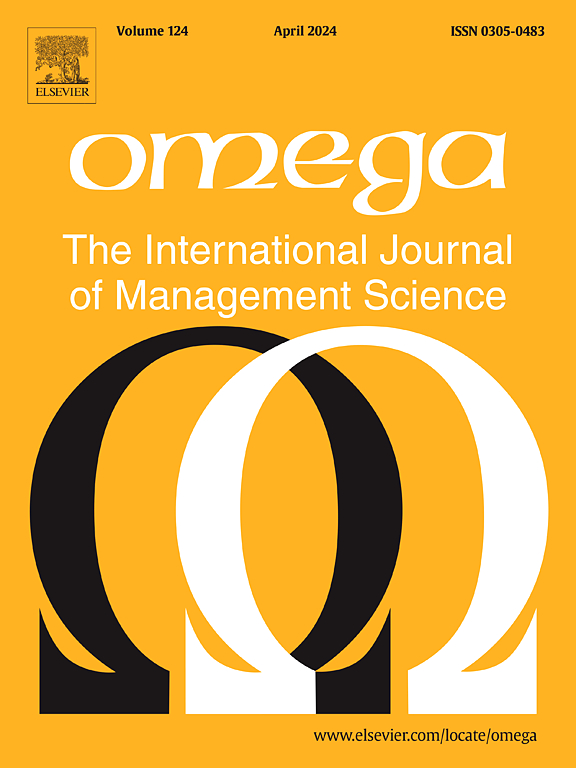超图聚类的模块化:方法和应用
IF 7.2
2区 管理学
Q1 MANAGEMENT
Omega-international Journal of Management Science
Pub Date : 2025-08-20
DOI:10.1016/j.omega.2025.103387
引用次数: 0
摘要
我们考虑了超图数据结构的顶点群检测问题。设计了许多方法来查找简单图上的社区,其中最重要的方法之一是模块化最大化。因此,我们也扩展了模块化的定义来处理超图。新的定义考虑了一个超边缘是否属于一个社区的内部,在肯定的情况下,超边缘被赋予一个权重,定义了它们顶点的内聚程度。其次,我们建立了一个超图模块化最大化的混合整数线性规划模型,其最优解存在于超图的最佳顶点划分中。以前的划分超图的尝试确实建议将超边投影到简单图上,用一个完整的子图替换每个超边。因此,我们将我们的建议与以前的方法(包括其他超图模块化定义)进行比较,我们发现我们提高了划分的质量。最后,我们将该方法应用于调查数据的分析,并展示了超图模块化聚类如何突出一些特殊的数据结构,否则这些结构对研究人员来说是隐藏的。本文章由计算机程序翻译,如有差异,请以英文原文为准。
Modularity for hypergraph clustering: Methodologies and applications
We consider the problem of detecting communities of the vertices of data structures defined as hypergraphs. There are many methods that were devised to find communities on simple graphs, one of the most important being modularity maximization. Therefore we extend the definition of modularity to deal with hypergraphs, too. The new definition considers whether a hyperedge as internal or not to a community, and in the affirmative case, the hyperedge is assigned with a weight defining the level of cohesiveness of their vertices. Next, we formulate a mixed-integer linear programming model to hypergraph modularity maximization, whose optimal solutions consist in the best vertex partitions of the hypergraph. Previous attempts of partitioning hypergraphs did suggest the projection of hyperedges onto simple graphs, replacing every hyperedge with a complete subgraph. So, we compare our proposal with the previous methodologies, including other hypergraph modularity definitions, and we find that we improve the quality of the partition. Finally, we apply the methodology to the analysis of survey data, and we show how hypergraph modularity clustering highlights some peculiar data structures that otherwise would remain hidden to researchers.
求助全文
通过发布文献求助,成功后即可免费获取论文全文。
去求助
来源期刊

Omega-international Journal of Management Science
管理科学-运筹学与管理科学
CiteScore
13.80
自引率
11.60%
发文量
130
审稿时长
56 days
期刊介绍:
Omega reports on developments in management, including the latest research results and applications. Original contributions and review articles describe the state of the art in specific fields or functions of management, while there are shorter critical assessments of particular management techniques. Other features of the journal are the "Memoranda" section for short communications and "Feedback", a correspondence column. Omega is both stimulating reading and an important source for practising managers, specialists in management services, operational research workers and management scientists, management consultants, academics, students and research personnel throughout the world. The material published is of high quality and relevance, written in a manner which makes it accessible to all of this wide-ranging readership. Preference will be given to papers with implications to the practice of management. Submissions of purely theoretical papers are discouraged. The review of material for publication in the journal reflects this aim.
 求助内容:
求助内容: 应助结果提醒方式:
应助结果提醒方式:


